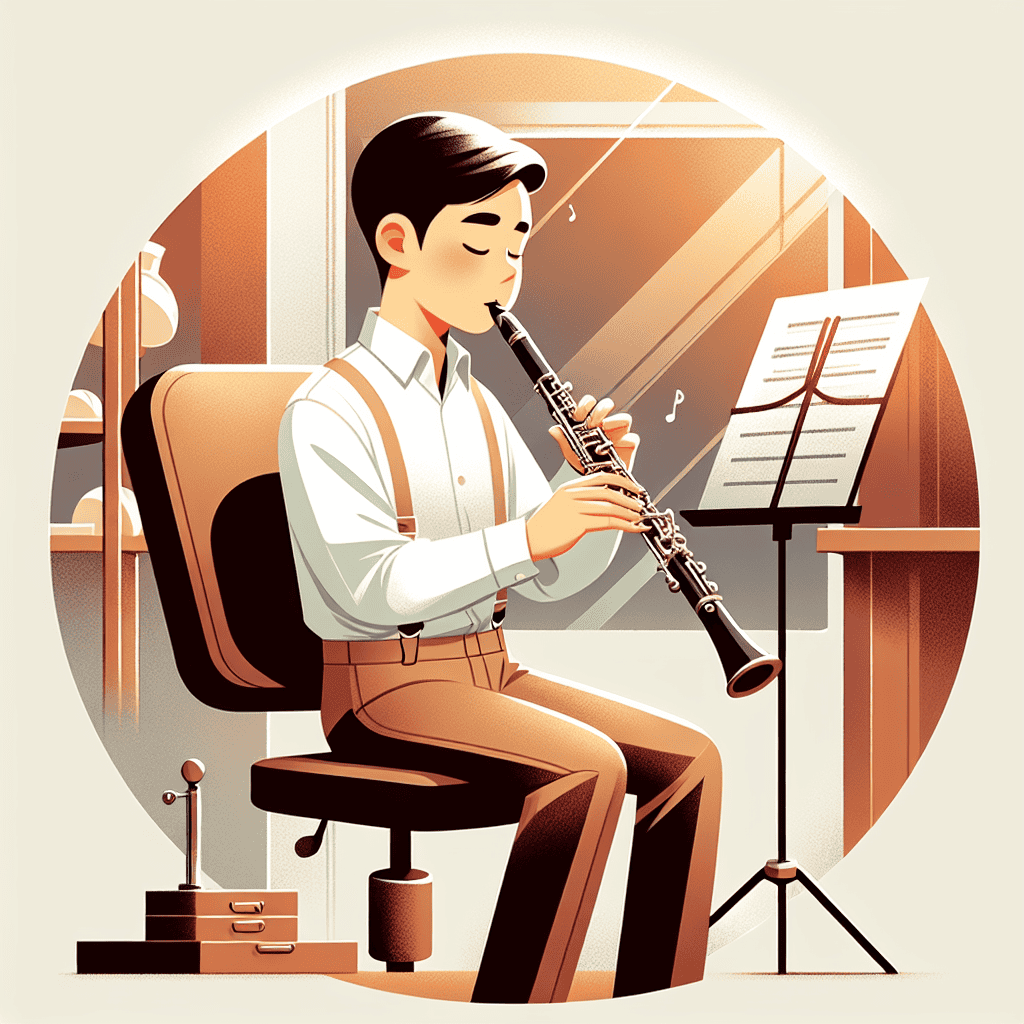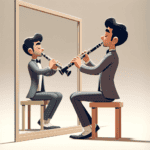Playing the clarinet is a rewarding experience, but without the right posture, it can quickly become uncomfortable or even hinder your technique. This clarinet posture guide will help you understand how to hold your clarinet comfortably and skillfully. Whether you're just starting out or you've been playing for years, your posture greatly affects everything from your sound to your stamina.
Why Is Clarinet Posture So Important?
You might wonder, “Does how I sit or stand really matter as long as I can play?” Well, think of posture like the foundation of a house. A shaky foundation? The whole structure suffers. Similarly, poor posture when playing the clarinet can lead to sore muscles, cramped fingers, and even long-term physical strain. More than just comfort, great posture ensures you have the best airflow, embouchure stability, and finger agility.
Starting with the Basics: Sit or Stand?
Let's address this common clarinet question. Should you sit while playing? Or stand? The truth is, you should be comfortable doing both. Whether you're practicing in your favorite chair or performing on stage, maintaining a relaxed yet upright posture is key. When sitting, keep both feet flat on the floor, knees at a right angle—not crossed, not dangling. When standing, balance your weight on both feet. Avoid leaning or slouching!
Remember: whether sitting or standing, keep your shoulders as relaxed as a lazy Sunday morning. Tension in your shoulders can throw everything off.
| Position | Key Points |
|---|---|
| Sitting |
– Feet flat on the floor – Knees at a right angle – Back straight, not leaning |
| Standing |
– Weight balanced on both feet – Shoulders relaxed – Stand tall, but not rigid |
Finding the Right Head Position
Your head position affects your tone more than you might realize! Keep your head in a neutral position, not too forward or tilted. Picture a string gently pulling the top of your head toward the ceiling. This keeps your neck upright while allowing effortless air support. This alignment reduces strain and helps you play with a beautiful, even tone. Plus, nobody looks graceful with their chin awkwardly jutting out toward their instrument!
Clarinet Angle: The Sweet Spot
Have you noticed how clarinet players don't hold their clarinets straight out in front of them like trumpeters or flutes? That 30 to 40-degree angle downward from your body is the sweet spot. This angle reduces stress on wrists and fingers while also setting up your embouchure to produce a strong, full tone.
Be careful not to angle the clarinet too close to your body—this can hinder airflow and create an uneven sound. Too far out, and you might overextend your arms (ouch!). When unsure, look at photos of professional clarinetists, like those playing Martin Freres instruments, and observe how natural their clarinet angles appear.
Relaxed Hands Are Skilled Hands
Your hands deserve attention too! Keep your fingers relaxed and let them hover gently over the keys. It's tempting to grip those keys like they're trying to escape, but less tension means quicker fingers and no annoying hand cramps mid-song. Rest your left thumb lightly on the thumb rest while your right thumb provides subtle support—not carrying the clarinet, but just offering a bit of balance.
Pro tip: Regularly check if your hands and fingers feel light and relaxed, especially after long practice sessions. It's easy to slip into bad habits, but conscious effort can help you stay on track!
Don't Forget About Breathing
Breath support is as essential to a clarinetist as the reed and ligature. Did you know your posture directly impacts your breath support? A slouchy back or hunched shoulders restrict your lungs and diaphragm, limiting your ability to sustain notes and maintain a steady tone.
Stand or sit tall, allowing for deep, comfortable breaths. Feel your ribs expand as you inhale—not just your chest. Think of yourself as a human bellows, directing that airflow through your clarinet with complete control.
Common Pitfalls to Avoid
- The ‘Clarinet Collapse': Slumping in your chair during practice might feel cozy, but it hurts sound quality and focus.
- Over-Tight Grip: Squeezing your clarinet won't help anyone. Keep it gentle.
- Forgetting Feet: Dangling feet during seated practice throws off balance, causing extra tension in your upper body.
Practicing Healthy Playing Habits
Playing music should never cause pain—period. If your clarinet practice leaves you physically exhausted, take a moment to assess what's happening. Often, a small adjustment can make a big difference. Is your clarinet's thumb rest positioned correctly? Are you tensing your shoulders or locking your joints? The solution might be simpler than you think. Take short breaks, stay hydrated, and listen to your body.
For students learning on brands like Martin Freres, designed with ergonomics and balance in mind, developing good posture can be less frustrating. However, even the best clarinets can't automatically fix poor habits, so keep practicing those posture techniques.
Using Mirrors and Videos
Here's a helpful trick for improving posture: mirrors and video recordings. Practicing in front of a mirror helps you spot habits you might otherwise miss. Do you lower your head during tricky passages? Are your elbows sticking out awkwardly? A quick glance can help you adjust.
Similarly, record yourself playing and watch it back. Seeing yourself from an outside perspective can be revealing—and you might also notice that your latest performance of Mozart's Clarinet Concerto sounds pretty impressive!
Final Thoughts on the Joy of Playing Comfortably
At its core, playing clarinet blends expression, skill, and good posture. Brands like Martin Freres are known for their excellent craftsmanship, partly because they understand how players physically interact with their instruments. But even with a top-notch instrument, improving your posture can make playing easier, more enjoyable, and help you produce better tones.
Table of Contents
- Why Is Clarinet Posture So Important?
- Starting with the Basics: Sit or Stand?
- Finding the Right Head Position
- Clarinet Angle: The Sweet Spot
- Relaxed Hands Are Skilled Hands
- Don't Forget About Breathing
- Common Pitfalls to Avoid
- Practicing Healthy Playing Habits
- Using Mirrors and Videos
- Final Thoughts on the Joy of Playing Comfortably








